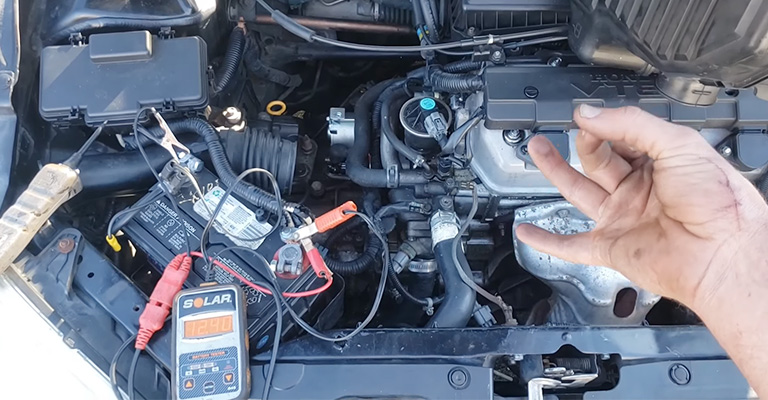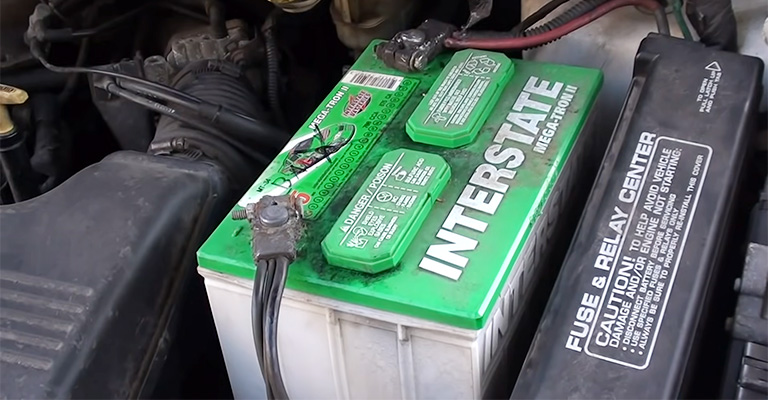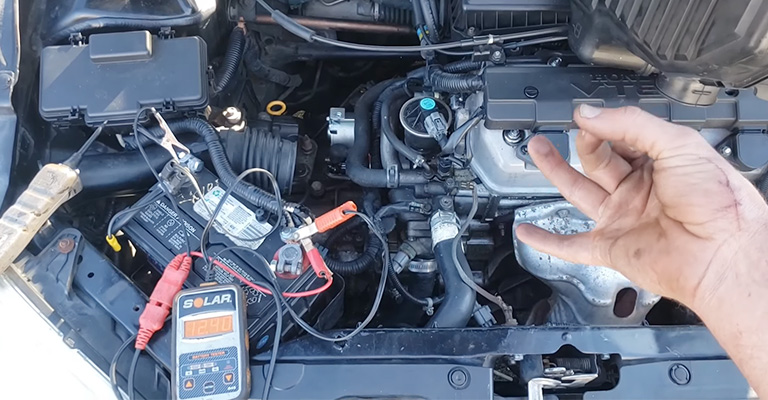Understanding the ignition switch system is essential when you want to replace or re-wiring it. For this, you have to learn what wires go to the ignition switch. In most cases,
- The thick red-colored wire goes to the battery
- The starter holds a yellow or brown wire
- The ignition input holds a yellow or red one, and
- The accessory holds the purple-colored wire
By the way, that’s not all. In this guide, we will talk about the ignition switch’s working system, the functionalities of the switch components, and how to change the wire if needed.

What Wires Go to the Ignition Switch?- An In-Depth Overview
You will get an in-depth and clear idea about the ignition switch wiring from the following table.
| Wire color | Connected to | Task |
| Thick Red wire | Battery (BATT) Terminal | Getting power to the system from the battery |
| Purple | Accessory (ACC) Terminal | ACC is connected to all electrical components of the car. It powers up the lights, radio, power windows, power steering, windshield wiper, and so on |
| Yellow or Red | Ignition Input (IGN) | Powers up the entire ignition system. It passes the electrical signal to the starter solenoid through a relay directly connected to the starter solenoid |
| Brown or Yellow | Starter (ST) | Basically, the terminal that starts the engine. The power to the starter comes through the solenoid connected to it. The solenoid power comes from the relay, which is connected to the IGN |
Note: The colors of the wires are not fixed. They may be changed in different cars. But mostly, the battery wire remains red.
How Many Positions Have The Ignition Switch?
Modern cars have a 4-terminal ignition switch with 4 positions. They are battery, ignition input, starter, and accessory. The switch works in four modes in the ignition switch.
- The first position is off mode
- Insert the key and turn it slightly clockwise once. The click sound you will hear puts the ignition switch in the ACC position
- The second turn will put the engine ON position
- If you turn the key clockwise to the last position of the ignition switch and hold it for 2 to 3 seconds, the engine will start
Working Principle of the Ignition Switch System: What Wires Go to the Ignition Switch?
Let’s discuss what wires go to the ignition system and how they connect the electrical component to start the engine.
Battery to Ignition Switch and Motor Solenoid

The red color positive line comes to the ignition. It is attached to the battery terminal of the ignition switch through a 15 amp fuse. The same connection from the battery goes to the solenoid from the battery. But this connection is not electrically connected from the solenoid to the motor.
Ignition Terminal to Relay
Another connection from the IGN terminal goes to an electrical relay through a safety switch. The safety switches are here to keep your car in parking mode so that it can’t jump unexpectedly.
However, the line from the safety switch goes to terminal number 86 of the relay. Another line from the relay, terminal 85, goes to the battery’s negative terminal, which is also known as the GND of the battery.
Starter Terminal to the Solenoid to Create Electrical Path

The wire from the starter terminal on the ignition switch goes to the relay to terminal number 30. Another wire from the relay, terminal 87, goes to the solenoid that creates the electrical path.
Now, the starter motor is ready to get the electric power from the battery through the ignition switch. When you ignite the key in the ignition hole, terminal 30 in the relay spark with terminal 87 on it. It switches the starter motor, which powers up the engine.
Accessory Terminal to Other Electronics
This wire is attached to the ACC terminal of the ignition that powers up the entire electronics in the car, like the headlights, tail lights, dashboard, signal lights, and many more.
You may check out an in-depth explanation of the ignition wiring system in the following video. https://youtu.be/SYLDMb7HHZ4
How to Wire the Ignition Switch?
The following step-by-step process will show you how to replace the wiring in your ignition switch.
Step 1: Unplug the Battery Connection

To start the wiring process, unplug the battery connection first. To do that, take out the negative wire from the battery, then the positive one. Unplugging is a must for the safety of your car’s other electrical components in this case.
Step 2: Remove the Steering Wheel Trim and Steering Wheel Itself
It’s time to remove all plastics around the ignition switch that wraps it up.
- Remove the steering wheel trim that catches up the steering wheel. Some pins and connectors should be removed to remove the trim
- Now, take out the steering wheel with a steering wheel puller. Make sure you do it the right way. You can consult the manufacturer’s manual. Removing the steering wheel will give you free space for better movement
Step 3: Free Up the Ignition Switch
Free up the ignition switch area by removing the ignition module. You may need to use a flathead screwdriver to do so. After removing the module from the car, remove the pins on the body of the module to free up the ignition switch.
Step 4: Remove the Wire From the Switch And Rewire the New Ones

It’s time to wire the ignition switch with new wires. In this stage, you might discover that your ignition switch might be damaged. Or, only the wires needed to be replaced.
If the switch is damaged, get a new switch from the market. An OEM switch is recommended as it will keep the terminal as it is in the switch. By the way, check the switch for terminals.
In modern cars, ignition switches are labeled with terminal names. You can also check the user and manufacturer manual to be assured about the terminal positions. Now, follow this sequence to wire up the ignition switch.
- Attach the starter terminal wire and connect it to the relay
- Attach the IGN terminal wire and connect it to the safety switch
- Attach the ACC wire to the ACC terminal and connect to the ACC component hub
- Finally, attach the wire to the battery terminal in the switch and connect the wire to the battery’s positive (+) terminal
After writing the ignition switch, re-attach the negative terminal of the battery to get the electric power system ready. Now reassemble the sterling wheel and other parts. Check the ignition switch to see if it works or not. Insert the ignition key and try to start the engine.
If everything goes well and perfectly, it should start the engine. However, consult an auto repair mechanic for help if anything goes wrong and your engine doesn’t start.
Note: Take necessary safety measurements before wiring. Make sure you are not attaching the terminal to the wrong lines.
When to Replace the Ignition Switch and Wiring?- Signs of Faulty Ignition Switch
The following signs tell you the ignition switch is faulty. You might need to re-wiring the switch with a new ignition switch in that scenario.
- The ignition switch will be unable to start the car’s engine
- You will not hear any sound or noise from the starter
- The light on the dashboard will be flickering
- The ignition key may get stuck inside the switch
- The car shakes while running, and sometimes the ignition remains on without a key inside
Conclusion
The ignition system is the power creation terminal of your car. It passes all necessary electrical flow to start the engine and power up other accessories. The ignition switch passes 12 volts to the starter motor and starts the engine.
Ultimately, the engine creates a huge amount of energy. So, wrong wiring may damage your car’s electrical system or other components. Hence, before handling the ignition wiring, it’s essential to make sure that you know what wires go to the ignition switch.

Leave a Reply